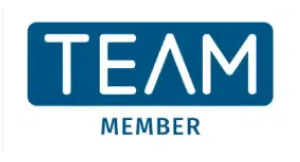Remote work recruitment has changed how companies attract and hire talent. The move to digital-first hiring approaches requires organisations to rethink their talent acquisition strategies, from finding candidates to bringing them on board.
The Evolution of Remote Work Recruitment
Remote work has changed from a rare benefit to a key part of modern work culture. Before COVID-19 about 5.7% of workers did their jobs from home five or more days a week in fields like media, IT, and management/consulting.
Many companies were slow to jump on the remote work bandwagon worried it might hurt productivity and security. But some smart businesses found real upsides—those offering remote work saw 50% less staff turnover and 13% better performance than office-based rivals.
The COVID-19 outbreak turned remote work from a slow-growing trend into a must-have overnight. The number of people working shot up from 4.7% in 2019 to 17.9% by 2021, with some industries seeing 50-62% of their staff working from home. Studies show that about 20-25% of workers in developed countries could keep working from home without any drop in output.
Though it has its perks, hiring remote workers comes with big hurdles:
- Technology infrastructure gaps – Technical problems during online interviews create bad impressions
- Cultural fit assessment challenges – Limited ability to see body language and non-verbal signals
- Cybersecurity worries – Keeping sensitive information safe throughout the online hiring process
- Time zone issues – Handling scheduling conflicts across global talent pools
Creating a Strong Digital Recruitment Presence
In today’s online-focused job market, building a solid web presence is key to attracting top remote talent. Career websites account for 34% of applications and 22% of hires making them essential for successful remote hiring strategies.
Making Career Pages Better for Remote Job Seekers
Your careers page gives job seekers their first look at your company especially for remote jobs where applicants might never step into an actual office. Research shows that 64% of people looking for work think career pages are some of the most helpful tools in their job hunt.
Make sure your website works well on phones—about half of all job seekers use their mobile devices to look for and apply to jobs. Add search options with filters for place, department, and job type to help people find jobs that fit what they’re after.
When it comes to hiring for remote work, show off your company’s work-from-home culture. Share stories from your employees and give people a peek at how your team works together online.
Using Social Media to Attract Talent
Social media plays a crucial role in finding remote talent. Companies that use social media to hire see a 49% increase in candidate quality. About 73% of people aged 18-34 found their last job through these platforms.
To use social media for remote hiring:
- Build a strong presence on platforms where your ideal candidates hang out
- Post genuine content that shows off your remote work culture
- Talk with your audience in industry-specific forums and groups
Writing Remote Job Descriptions That Grab Attention
A good remote job description draws in qualified candidates and turns away those who might find it hard to work. Make sure to spell out the remote work setup and list any location or time zone needs. This helps candidates understand what to expect when working together.
Concentrate on results instead of methods giving room to adapt while keeping things clear. Add requirements specific to remote work like being self-driven, managing time well, and communicating online.
A Fresh Look at Interviewing
Online interviews need new ways of doing things and tech tools to assess candidates without meeting in person.
Smart Ways to Interview Online
Check all your tech at least a day before interviews to make sure mics, cameras, and internet work right. Set up a pro-looking space with good light and not much to distract in the background.
Because you can’t see full body language, facial expressions matter more. Look at the camera, not the screen, to keep eye contact. Wait a bit after questions so you don’t talk over others because of sound delays.
Start with neutral topics to build a connection before asking formal questions. Use a balanced scorecard with 4-6 core competencies to add structure and objectivity when comparing candidates.
Assessing Remote Work Capabilities
Remote work requires specific skills beyond technical qualifications. When evaluating candidates, look for:
- Communication abilities – Check written communication in application materials and screening responses
- Self-motivation – Look at how well they follow instructions and their confidence in working alone
- Time management – Ask them to give examples showing how they schedule their work
- Adaptability – Use scenario-based questions about handling unexpected challenges
Come up with scenarios that reflect real remote work situations, like dealing with tech problems or managing competing deadlines without a boss looking over your shoulder.
Getting New Hires Started in a Virtual Setting
Good virtual onboarding matters a lot. When done right, it can increase employee retention by 82% and help companies grow their revenue 2.5 times faster.
Making Remote Onboarding Fun and Useful
A well-planned approach helps new remote workers understand their jobs better. Successful remote onboarding starts before the first day. It includes sending login info welcome packages that showcase company values, and setting up online meet-and-greets.
Personalisation has an impact on creating memorable first impressions. Keep in mind, 70% of people who experience exceptional onboarding say they have “the best possible job” and are 2.6 times more likely to feel “satisfied” in their workplace.
**Digital Tools to Integrate **
The right technology makes the entire remote onboarding process smoother through:
Video conferencing to hold virtual orientations
Employee apps to centralise policies and training materials
Digital signature tools to complete paperwork
Self-paced learning modules with interactive content
Building Connections Without Being There
A buddy system works well – 56% of employees who get a mentor during onboarding fit into company culture faster, make fewer mistakes, and show higher productivity.
Virtual networking options like coffee chats and team-building activities help copy casual office interactions. Regular check-ins allow companies to grasp new hires’ experiences and tackle issues .
Measuring Remote Recruitment Success
Without proper metrics, companies struggle to know if their virtual hiring strategies work. Data-driven recruitment leads to smarter choices and ongoing improvements.
Key Performance Indicators for Remote Hiring
Track application completion rates to assess how easy your process is for remote candidates. Study candidate sourcing success across different channels to find where your best talent comes from. Time-to-hire metrics show how fast you can secure top talent.
Companies that put in place clear KPIs see double the engagement and 14.9% less turnover than those that don’t keep tabs on metrics.
Keeping an Eye on Remote Worker Retention
Businesses with mix-and-match or flexible work setups keep the most staff overall. To track retention, look at first-year dropout rates, as high early exits often point to issues with how well the hiring process fits or weak onboarding.
To Wrap Up
Remote hiring has changed the game in how companies find, size up, and bring in talent. Firms that jump on board with remote hiring practices see fewer people leave, tap into wider talent pools, and get better results from their recruiting efforts.
To succeed, you need a full-court press: build a strong online hiring presence, rethink how you interview, roll out solid onboarding programs, and use data-driven metrics to measure how well you’re doing.
As tech keeps evolving and workplace customs keep changing, companies that set up strong virtual hiring methods now put themselves in a good spot to bring in and keep top workers no matter where they are. With careful planning, the right tools, and steady tracking, businesses can create effective remote teams while keeping their company culture strong in spread-out work setups.













